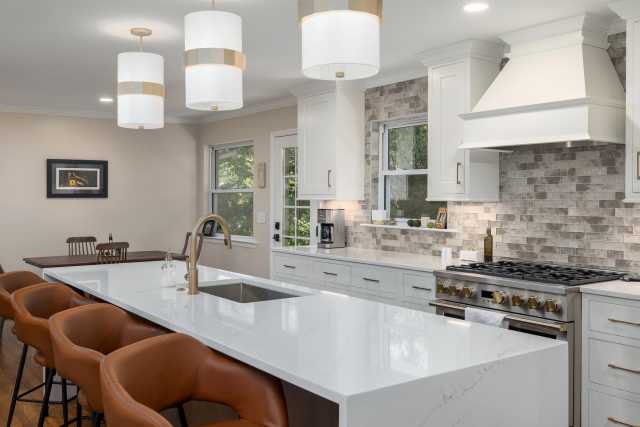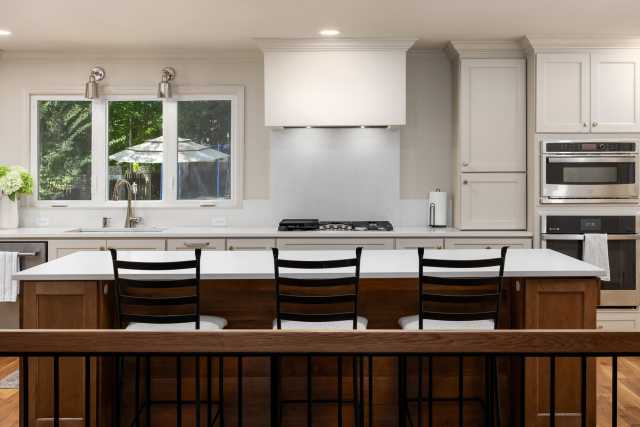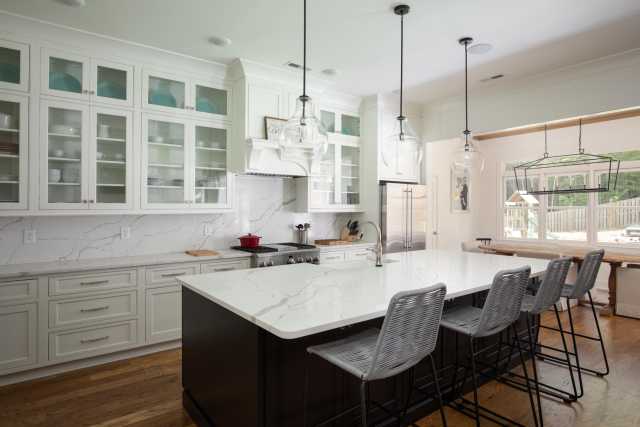The Definitive Guide to Lot Selection for Your Custom Home: A Due Diligence Report - part 7

Infrastructure and Utilities: Calculating the True Cost of Connection
A beautiful piece of land is of little use if it cannot be supplied with the essential services required for modern life. Access to water, wastewater disposal, electricity, gas, and communications is not a given, particularly on rural or large estate lots. The process of connecting these utilities can represent one of the largest and most variable sources of "hidden costs" in a custom home project. A thorough investigation and accurate cost estimation for utility connections are therefore an indispensable part of lot due diligence.
Water Supply: Municipal vs. Private Well
The source of potable water is a primary consideration, with two main options available.
- Municipal Water:
- Process and Costs: If the property is located in an area served by a public water utility, connection involves paying a one-time "tap-in" or "connection" fee to the municipality and hiring a contractor to run a service line from the public water main (usually located under the street) to the house. The total cost for this can range from approximately $1,000 to over $6,000, depending heavily on the distance from the main to the house and the specific fees charged by the local utility.
- Pros: Connecting to a municipal supply offers convenience and reliability. The homeowner is not responsible for maintenance of the system, the water quality is regulated and regularly tested by the utility to meet EPA standards, and it is generally preferred by mortgage lenders.
- Cons: The primary drawback is the ongoing cost of monthly water bills. The homeowner is also subject to any service interruptions caused by water main breaks or other municipal system failures, and the water is typically treated with chemicals like chlorine, which can affect taste.
- Private Well:
- Process and Costs: On lots where public water is not available, a private well is necessary. This involves hiring a specialized well drilling company to drill deep into the ground to access an aquifer, install a submersible pump, and connect it to a pressure tank inside the home. A well yield test must be performed to ensure it can produce a sufficient quantity of water for the household's needs, and the water must be tested for quality. The upfront cost is significant, typically ranging from $5,000 to $10,000, but can be much higher depending on the required depth to reach water. In some geological areas, a well can cost upwards of $100,000.
- Pros: The main advantage is financial: once the well is installed, there is no monthly water bill, which can lead to substantial long-term savings. It also provides independence from municipal systems and potential water restrictions during droughts. Many people also prefer the natural, untreated taste of well water.
- Cons: The homeowner bears full responsibility for all aspects of the well, including all maintenance, periodic water quality testing, and any necessary repairs to the pump or other components. Critically, the well pump requires electricity to operate, so a backup generator is essential to have water during a power outage.
Wastewater Management: Public Sewer vs. Private Septic
Similar to the water supply, wastewater disposal is a critical infrastructure decision with two distinct options.
- Public Sewer:
- Process and Costs: If a municipal sewer main is accessible, the home's plumbing is connected to it via a sewer lateral line. As with water, this involves a connection fee paid to the utility and the cost of trenching and laying the pipe. Costs can range from $1,500 to over $10,000, depending on the distance and local fees.
- Pros: Public sewer systems are virtually maintenance-free for the homeowner. They are designed to handle high volumes of wastewater without issue and are generally considered to increase a property's value due to their convenience.
- Cons: Connection comes with the requirement to pay ongoing monthly or quarterly sewer fees, which can be substantial. The homeowner also has no control over the system and is subject to any backups or issues that may occur in the municipal main lines.
- Private Septic System:
- Process and Costs: This is the required solution for lots without sewer access. The process begins with a successful percolation test (see Section 6.2). A licensed contractor then installs the system, which consists of a large underground septic tank and a subsurface drain field (or leach field). The installation cost for a conventional system typically ranges from $3,400 to $11,500. However, if the lot has poor soil or other constraints, a more complex and expensive "engineered" septic system may be required.
- Pros: The primary benefits are the absence of monthly sewer bills and the ability to develop land in rural areas not served by public infrastructure. When properly maintained, septic systems are an environmentally friendly method of wastewater treatment.
- Cons: The homeowner is responsible for all maintenance, which includes having the septic tank pumped out every 3-5 years (at a cost of $300-$600) and protecting the drain field area. Septic systems require a significant amount of land and limit future use of that area (e.g., you cannot build a pool or driveway over a drain field). They are also susceptible to failure if not properly maintained or if inappropriate items (like grease or harsh chemicals) are put down the drain.
Power, Gas, and Communications
- Electricity:
- Process and Costs: Connecting to the electrical grid is a critical early step, as power is needed during construction. The process begins by contacting the local electric utility company to request a site assessment and cost estimate. This will involve an engineering review, payment of an invoice, and the granting of a legal right-of-way easement for the power lines. The cost is highly variable. If a power pole and transformer are already at the property line, the connection fee may be minimal. However, extending service to a remote site can be extremely expensive. Costs of $5 to $25 per linear foot are common for running new lines. A 1,000-foot extension could easily cost between $10,000 and $25,000. Installing lines underground is significantly more expensive than running them overhead on poles, and a new transformer can add another $3,000 to $7,000 to the bill.
- Natural Gas / Propane:
- Natural Gas: If a public natural gas main is available, the cost to install a service line to the house is relatively modest, averaging between $500 and $2,000.
- Propane: In areas without natural gas service, the alternative is to install a large, privately-owned propane tank on the property. The installation cost for the tank is typically between $700 and $5,700, and the owner must then arrange for periodic refills from a propane supplier.
- Internet and Cable: In today's connected world, reliable high-speed internet is a necessity, not a luxury. It should never be assumed that service is available, especially on rural lots. It is essential to contact local providers to confirm serviceability. Extending cable or fiber-optic lines to a property can be prohibitively expensive, sometimes costing tens of thousands of dollars. Speaking with potential neighbors or joining local online community forums can provide real-world feedback on the quality and reliability of available internet options.
The distance of the chosen building site from the public road or nearest utility connection point is the single greatest multiplier of these infrastructure costs. A decision to place a home deep within a large parcel for privacy, while aesthetically appealing, has a direct and compounding financial consequence. The cost of extending the driveway, the electrical line, the water line, and the communications cable are all calculated on a per-linear-foot basis. A 1,000-foot setback from the road doesn't just double the cost of a 500-foot setback; it multiplies the cost across nearly every utility simultaneously. This decision alone can easily add over $100,000 in site development costs compared to building closer to the road. Therefore, a prudent buyer should have their builder and architect evaluate several potential building sites on a lot, each with a corresponding estimate for utility and access costs, before making a final decision on the home's placement.
Cost Item | Low Estimate | High Estimate | Notes/Assumptions |
Site Preparation |
|
|
|
Land Clearing (1 acre) | $1,500 | $6,750 | Varies with vegetation density |
Grading & Earthwork | $1,000 | $30,000 | Varies with slope and soil |
Demolition (existing home) | $10,000 | $25,000 | Includes debris removal |
Driveway Installation | $2,500 | $15,000+ | Varies with length and material |
Surveys & Testing |
|
|
|
Land Survey | $500 | $1,000 | Higher for large or complex lots |
Geotechnical Soil Test | $1,000 | $5,000 | Essential for foundation design |
Percolation (Perc) Test | $200 | $500 | Required for septic systems |
Permits & Fees |
|
|
|
Building Permits | $500 | $2,000 | Varies by municipality |
Impact Fees | $1,000 | $20,000+ | Can be very high in some areas |
Utility Connections |
|
|
|
Municipal Water Hookup | $1,000 | $6,000 | Includes tap fee and service line |
Private Well Installation | $6,000 | $20,000 | Varies with depth and geology |
Public Sewer Hookup | $1,600 | $10,900 | Includes tap fee and service line |
Septic System Installation | $6,000 | $20,000 | Conventional system; engineered is more |
Electrical Line Extension | $500 | $25,000+ | Per 100ft: $500-$2,500 |
Natural Gas Hookup | $500 | $2,000 | If main is available |
Propane Tank Installation | $700 | $5,700 | Includes tank and initial fill |





